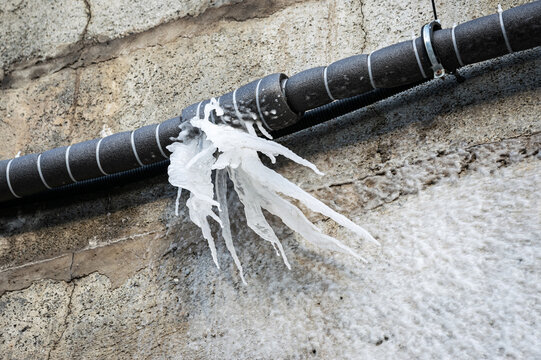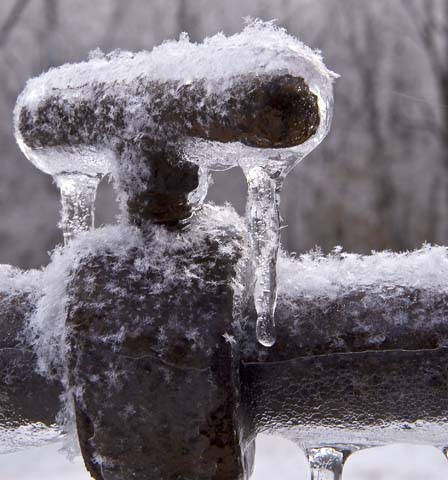Tips to Defend Plumbing System from Cold Weather: Essential Tips
Tips to Defend Plumbing System from Cold Weather: Essential Tips
Blog Article
We've come across this post about Prevent Frozen Pipes listed below on the internet and believe it made good sense to share it with you on this site.

Cold weather can damage your plumbing, particularly by freezing pipelines. Below's how to avoid it from happening and what to do if it does.
Introduction
As temperatures decrease, the threat of frozen pipes boosts, potentially leading to pricey repairs and water damages. Comprehending exactly how to stop frozen pipelines is crucial for home owners in cool environments.
Understanding Frozen Pipelines
What triggers pipelines to freeze?
Pipes ice up when subjected to temperature levels listed below 32 ° F (0 ° C) for extended periods. As water inside the pipes freezes, it expands, putting pressure on the pipeline walls and possibly triggering them to break.
Threats and problems
Icy pipelines can result in water system interruptions, residential or commercial property damage, and expensive repairs. Burst pipes can flooding homes and create comprehensive architectural damage.
Indications of Frozen Pipes
Identifying frozen pipes early can avoid them from rupturing.
Just how to recognize icy pipes
Search for decreased water circulation from faucets, unusual smells or noises from pipes, and visible frost on revealed pipes.
Avoidance Tips
Protecting susceptible pipes
Wrap pipelines in insulation sleeves or utilize heat tape to shield them from freezing temperature levels. Concentrate on pipes in unheated or external areas of the home.
Heating techniques
Maintain indoor spaces properly heated, especially areas with plumbing. Open cupboard doors to allow cozy air to flow around pipes under sinks.
Securing Outdoor Plumbing
Yard hoses and outside taps
Detach and drain yard hoses before winter season. Set up frost-proof faucets or cover outdoor faucets with protected caps.
What to Do If Your Pipes Freeze
Immediate activities to take
If you believe frozen pipelines, maintain taps available to soothe stress as the ice thaws. Use a hairdryer or towels taken in warm water to thaw pipelines slowly.
Long-Term Solutions
Architectural adjustments
Consider rerouting pipelines far from exterior walls or unheated locations. Include extra insulation to attics, cellars, and crawl spaces.
Upgrading insulation
Purchase high-grade insulation for pipelines, attics, and wall surfaces. Appropriate insulation helps keep consistent temperatures and minimizes the threat of icy pipelines.
Final thought
Stopping icy pipelines requires aggressive measures and fast actions. By comprehending the causes, indications, and preventive measures, property owners can secure their pipes during winter.
5 Ways to Prevent Frozen Pipes
Drain Outdoor Faucets and Disconnect Hoses
First, close the shut-off valve that controls the flow of water in the pipe to your outdoor faucet. Then, head outside to disconnect and drain your hose and open the outdoor faucet to allow the water to completely drain out of the line. Turn off the faucet when done. Finally, head back to the shut-off valve and drain the remaining water inside the pipe into a bucket or container. Additionally, if you have a home irrigation system, you should consider hiring an expert to clear the system of water each year.
Insulate Pipes
One of the best and most cost-effective methods for preventing frozen water pipes is to wrap your pipes with insulation. This is especially important for areas in your home that aren’t exposed to heat, such as an attic. We suggest using foam sleeves, which can typically be found at your local hardware store.
Keep Heat Running at 65
Your pipes are located inside your walls, and the temperature there is much colder than the rest of the house. To prevent your pipes from freezing, The Insurance Information Institute suggests that you keep your home heated to at least 65 degrees, even when traveling. You may want to invest in smart devices that can keep an eye on the temperature in your home while you’re away.
Leave Water Dripping
Moving water — even a small trickle — can prevent ice from forming inside your pipes. When freezing temps are imminent, start a drip of water from all faucets that serve exposed pipes. Leaving a few faucets running will also help relieve pressure inside the pipes and help prevent a rupture if the water inside freezes.
Open Cupboard Doors
Warm your kitchen and bathroom pipes by opening cupboards and vanities. You should also leave your interior doors ajar to help warm air circulate evenly throughout your home.

We hope you enjoyed reading our article about Prevent Frozen Pipes . Thanks for finding the time to browse our piece of content. Sharing is caring. You won't know, you will be doing someone a favor. Thank you for your time. Kindly check our blog back soon.
Click Here To Read More Report this page